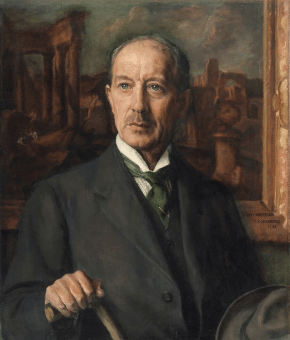Henry Harrison (Irish politician) facts for kids
Quick facts for kids
Henry Harrison
|
|
|---|---|
 |
|
| Member of the British Parliament for Mid Tipperary |
|
| In office 1890–1892 |
|
| Personal details | |
| Born | 17 December 1867 |
| Died | 20 February 1954 |
| Political party | Irish Parliamentary Party |
| Alma mater | Balliol College |
Captain Henry Harrison (17 December 1867 – 20 February 1954) was an Irish politician and soldier. He was a MP, which means he was elected to represent people in the House of Commons in the United Kingdom of Great Britain and Ireland. He represented Mid Tipperary from 1890 to 1892 as part of the Irish Parliamentary Party.
Later, Henry Harrison became an officer in the Royal Irish Regiment. He fought in World War I with the New British Army. He was also a writer and worked to improve the relationship between the United Kingdom and Ireland.
Contents
Henry Harrison's Early Life and Education
Henry Harrison was born on December 17, 1867. His father was Henry Harrison, and his mother was Letitia Tennent. His mother's father, Robert James Tennent, was also a politician. He was a Liberal MP for Belfast from 1847 to 1852. Henry Harrison also had a sister, Sarah Cecilia Harrison, who was an artist.
Henry went to Westminster School and then studied at Balliol College at Oxford University. While he was at Oxford, he became a big fan of Charles Stewart Parnell. Parnell was a very important Irish leader. Henry Harrison became the secretary of the Oxford University Home Rule Group. This group wanted Ireland to have more control over its own laws.
Getting Involved in Irish Politics
Around this time, there was a period called the Land War in Ireland. This was a time of conflict over land ownership. In 1889, Henry Harrison went to Gweedore, County Donegal, to see what was happening with people being forced out of their homes. He got into some arguments with the police, called the Royal Irish Constabulary. Because of this, he became well-known as a supporter of Irish independence.
The next year, when he was only 22, Charles Stewart Parnell offered him a chance to become an MP for Mid-Tipperary. Henry left Oxford and took the seat without anyone running against him.
Political Challenges and War Service
Just six months after Henry Harrison became an MP, the Irish Parliamentary Party faced a big problem. The party split because of a scandal involving Parnell. Henry Harrison strongly supported Parnell. He even acted as Parnell's bodyguard and helper. After Parnell died, Henry continued to support Parnell's widow, Katharine. She told him a different story about the scandal than what was in the newspapers. This inspired Henry to write books later on.
Leaving Parliament and Later Life
In the election of 1892, Henry Harrison did not try to keep his seat in Mid-Tipperary. Instead, he ran in West Limerick as a "Parnellite," meaning he still supported Parnell's ideas. However, he did not win that election. In the 1895 election, he ran again in North Sligo but still didn't win. In 1895, Henry married an American woman named Maie Byrne, and they had a son.
Henry Harrison became famous again briefly in 1903. Even though he wasn't a lawyer, he successfully argued his own case in court. He won his case all the way up to the British House of Lords, which is the highest court in the UK.
Fighting in World War I
Henry Harrison mostly stayed out of public life until World War I. He joined the Royal Irish Regiment and fought on the Western Front. This was a major battle area during the war. He was a very good soldier and became a Captain. He even won the MC for his bravery. He was very good at organizing patrols in "No Man's Land," which was the dangerous area between enemy trenches. He was so good that he became a special patrol officer for the 16th (Irish) Division. Later, he was injured and became a recruiting officer in Ireland, helping to find new soldiers. In 1919, he was given the title of Officer of the Order of the British Empire.
Working for Peace and Writing Books
After the war, Henry Harrison returned to Irish politics. He worked with Sir Horace Plunkett as the Secretary of the Irish Dominion League. This group wanted Ireland to have "dominion status" within the British Empire. This meant Ireland would be a self-governing country but still part of the British Empire. Henry Harrison always believed that Ireland should not be divided.
He also worked as a writer. He was the Irish correspondent for The Economist magazine from 1922 to 1927. He also owned and edited a newspaper called Irish Truth from 1924 to 1927.
Defending Parnell's Legacy
Henry Harrison wrote two important books in 1931 and 1938 that defended Charles Stewart Parnell. These books helped change how people viewed Parnell's role in the scandal. Historians say that Henry Harrison "did more than anyone else to uncover what seems to have been the true facts" about the situation. He even made The Times newspaper publish a four-page correction about their past articles that had unfairly attacked Parnell.
Promoting British-Irish Relations
During difficult times between Britain and Ireland, like the Anglo-Irish Trade War and Ireland becoming a republic, Henry Harrison worked hard to keep good relations. He wrote many books and letters to The Times about these issues. In 1942, he helped start the Commonwealth Irish Association.
When he died on February 20, 1954, Henry Harrison was the last living member of the Irish Parliamentary Party that Parnell had led. He is buried in Holywood, County Down.

